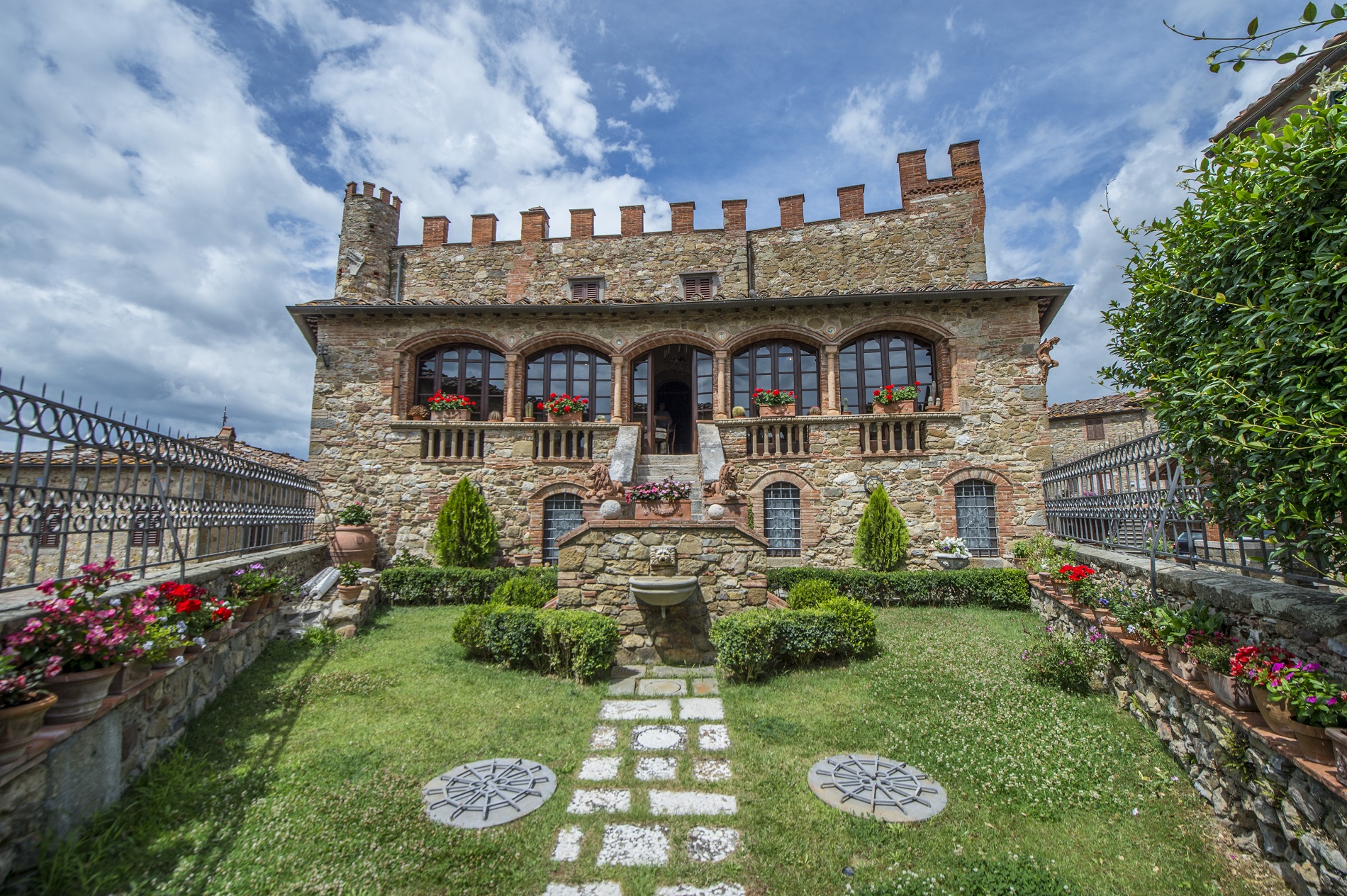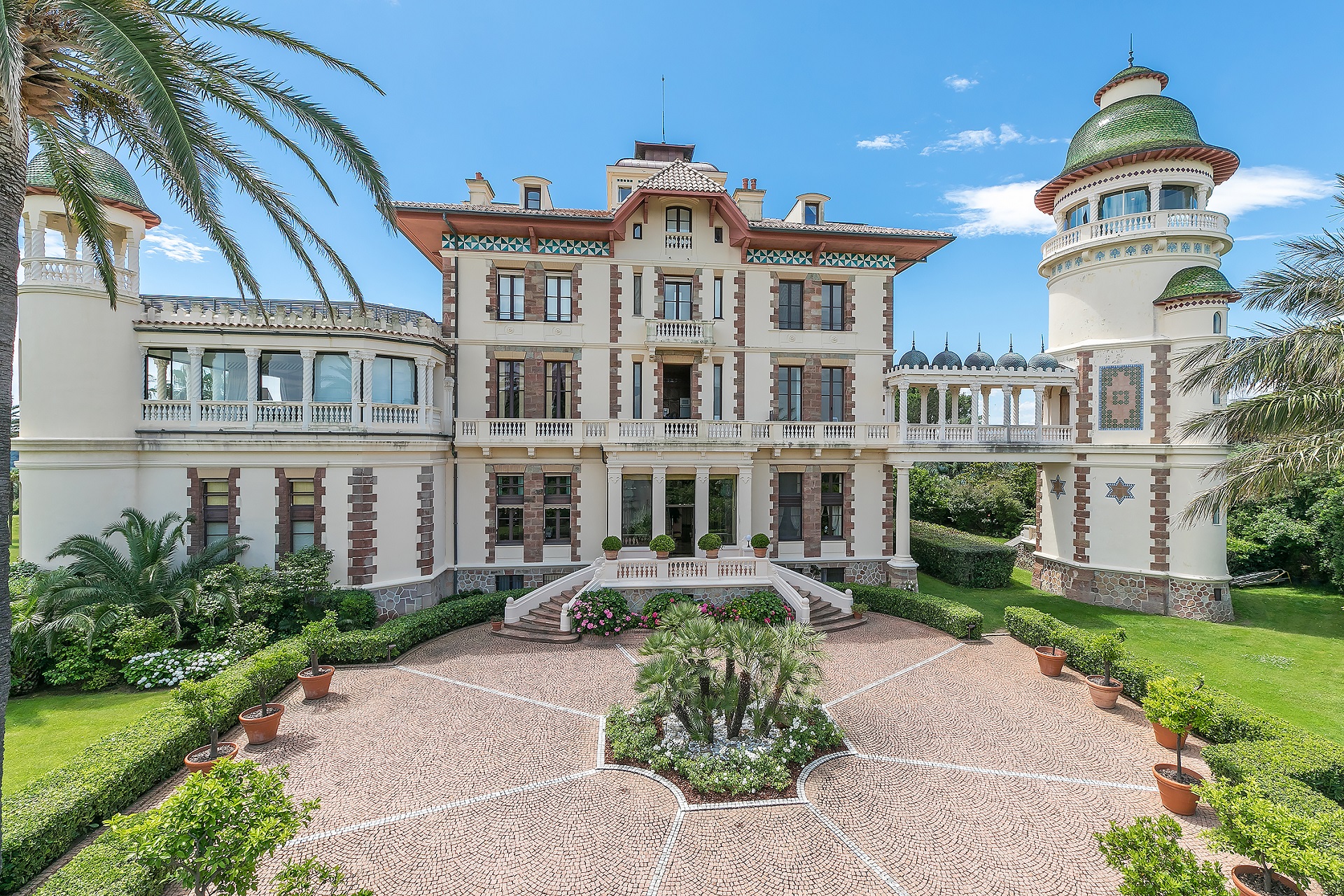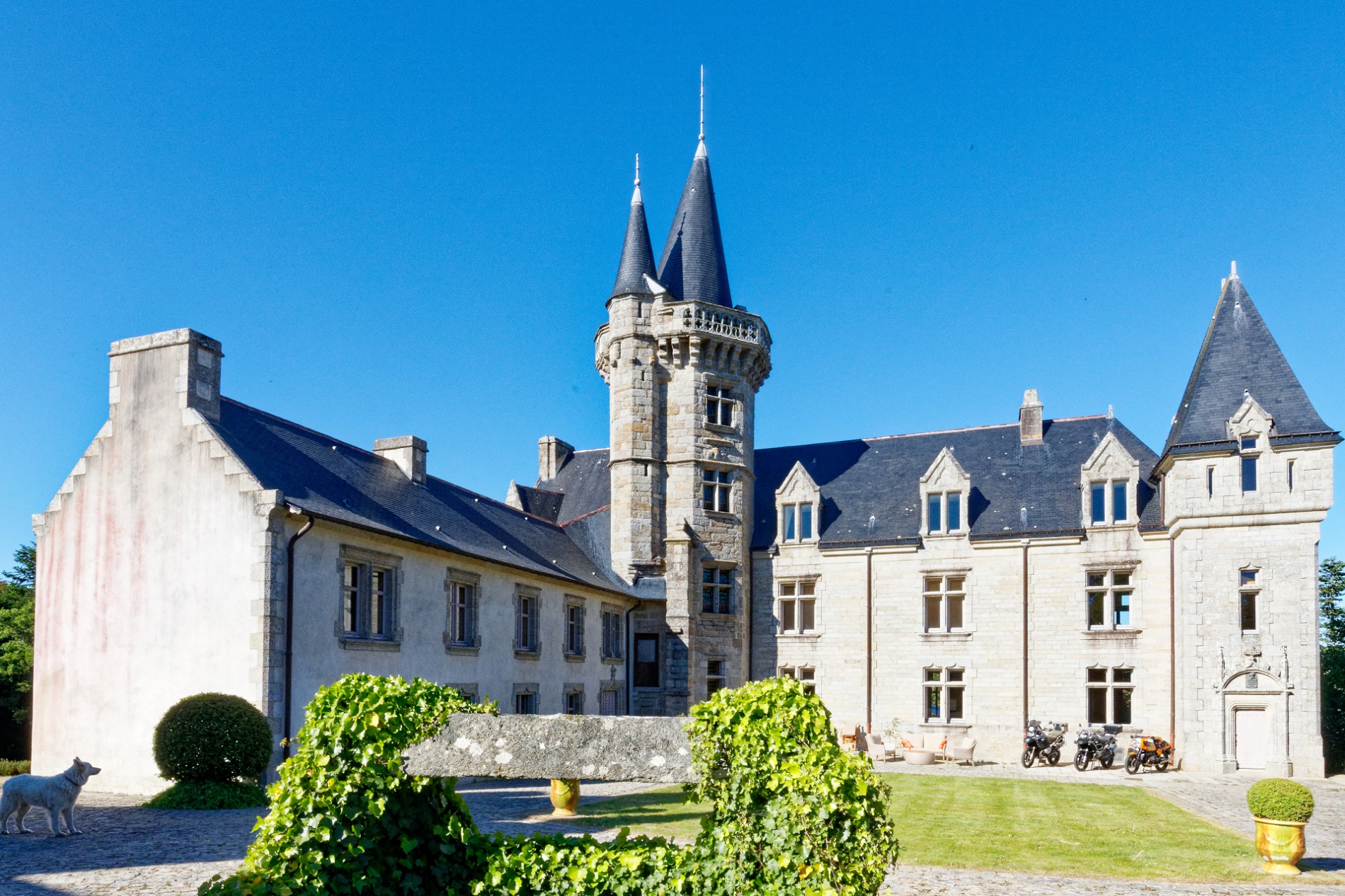8 Castles That Blend the Medieval with the Modern
Luxury Defined presents a collection of castles and châteaux with timeless charm and contemporary comforts
Luxury Defined presents a collection of castles and châteaux with timeless charm and contemporary comforts
Credit the historical romances of Sir Walter Scott for putting the castle into the popular imagination as the locale for swashbuckling tales of chivalric knights, fair maidens, and courtly love.
In truth, castles began as fortresses to guard trade routes, river crossings, and other strategic waypoints. Towns sprung up around them, and the nobility built castles to protect their own domains from contentious rivals.
Today’s castles bear little resemblance to their cramped and draughty ancestors. This edition of Luxury Defined presents historic structures converted into luxuriously appointed private homes.
Lavish amenities like spas, elevators, underfloor heating, and chef’s kitchens are designed to satisfy modern tastes, especially when they’re set against the medieval grandeur of a castle with centuries-old mosaic floors, stone fireplaces, and stained-glass windows.
Whether the castle of your dreams is Gothic, Baroque, or Neoclassical, these residences exemplify master craftsmanship on a grand scale with timeless order and contemporary appeal.
Château Žinkovy is the largest privately owned castle in the Czech Republic. This magnificent estate encompasses 47 acres of formal gardens, parkland, and farmland surrounded by an idyllic landscape of lakes and ancient forests in the Pilsen region of West Bohemia.
The centerpiece is the fairy-tale castle, built as a fortress in the 12th-century. Ownership went eventually to the knights of Wesselý, who commissioned Viennese theatrical architects Fellner and Helmer to build the striking neo-Renaissance facade. The Škoda car-manufacturing family owned the property until the end of WWII when it was taken over by the government.
The château is defined by its towers, balconies, covered walkways, and statuary. The complex extends to 123,709 square feet and includes offices, a restaurant, conference rooms, four apartments, and extensive parking (ideal for weddings and corporate retreats).
A mill, granary, outbuildings, a partially renovated farm with 12 bungalows (six of which are refurbished), a well with a spring, and a water treatment plant complete the amenities.
Built circa-1656 on the site of a medieval fortress dating from 1200, this restored, moated castle is on the banks of the Geul, a meandering tributary of the River Meuse.
Schaloen Castle’s neo-Gothic architecture remains beautifully intact, including the stately façade with its 6.5-foot-thick walls, built of basalt stone; four turrets; and mansard roof.
Surrounding the monumental structure are 2.5 acres of formal gardens fronting the River Geul.
Nearby are two other historically significant castles, Castle East and Castle Genhoes. All three castles are sited within a 988-acre nature reserve in Oud Valkenburg, a picturesque village in the Dutch province of Limburg.

A small hamlet in Tuscany’s Chianti hills is the breathtaking setting for this medieval castle. Built in the 12th century, it was one of many defensive fortresses guarding this strategically important valley between Siena and Arezzo.
The old stone walls include perfectly maintained Guelph crenellation and brackets with coats of arms, Florentine mullioned windows, and an arched loggia, which leads to an Italian garden with terra-cotta and stone statues.
The 8,600-square-foot interior is configured as nine luxurious apartments. The original details include terra-cotta tile floors, exposed stone walls, beamed ceilings, stained glass windows, frescoes, bronzes, and decorative marble fireplaces.
The castle is one of several structures surrounding a central courtyard. Among them are three separate guest apartments, a fitness center, and garage. This unique property also includes a swimming pool and beautiful parkland with an olive grove.
One of the oldest continuously occupied sites in Ireland, County Cork’s Blackwater Castle has a history dating back millennia. Built as the fortress of Dún Crúadha, much of its history is set down in the Book of Fermoy, a 15th-century manuscript in Dublin’s Royal Irish Academy.
It documents the Roche family, who occupied the castle from 1100 to 1666. Sir Walter Raleigh captured the castle in 1580, and Oliver Cromwell laid siege to Blackwater in 1649. Below the castle, near the River Awbeg is the Holy Well of St. Patrick.
Blackwater’s architectural features include a 12th-century round tower, watchtowers, and battlements. The Norman tower keep, built in the mid-15th century, is mainly intact with the ground and two main floors, the roof and spiral staircase all in remarkable condition.
The keep retains the standard features to fend off attackers: uneven steps (trip steps), a murder hole (to rain unpleasantness on unwelcome visitors), sloping batter walls, and an overhanging privy room, or garderobe.
Today, the castle is a private home and an exclusive hospitality venue. Its nine suites welcome up to 23 people across the first and second floors. Its six reception rooms include a breakfast room, dining room, tearoom, a bar lounge, a piano room, and library, all served by a spacious, fully equipped commercial kitchen.
Mature woodland surrounds the imposing castle and its courtyard and walled garden. The grounds extend to more than 60 acres and include wide lawns, orchards, fruit and vegetable gardens, and a greenhouse. The River Awbeg flows through the estate and provides 1 km of private double-bank fishing rights.

This regal apartment is in Saint-Tropez’s legendary Château Borelli, an opulent 19th-century castle on the Bay of Canoubiers.
Château Borelli’s two minaret-like towers rise from its paradisal setting in the exclusive gated community of Les Parcs de Saint-Tropez. The design is evocative of Egyptian Neo-Mamluk architecture. Of particular note is a beautiful domed tower, accessed via a turreted, covered walkway.
Other notable features of the 2,368-square-foot, four-bedroom home are palatial reception rooms with ornate frescoed ceilings. Furthering the allure are private, palm-lined gardens with a resort-worthy swimming pool.
This beautiful property is perched on a cliffside overlooking the Combe de Savoie Valley, between Chambery and Albertville, near the Swiss border.
The main residence is a restored 19th-century maison de maître with a two-story crenelated watchtower and medieval chapel.
The living spaces extend to nearly 6,500 square feet across three levels, including the original watchtower and chapel. The reception rooms and bedrooms are appointed with original wood floors, decorative ceilings, and log-burning fireplaces.
The owner’s suite is an enchanting private retreat with wood-panelled walls and a domed ceiling with a skylight. The 0.7-acre complex also includes a private chapel, stables, several outbuildings, and formal gardens.
Offered for sale separately is a magnificent 11th-century fortress and keep. Classified as a national historic monument, it is one of the finest preserved sites in the Savoie, complete with dungeons, turrets, and tunnels. Completing the picture are 2.5 acres of gardens with 180-degree views of the Combe de Savoie Valley and the Alps.
The Kasbah, Tangier’s ancient citadel, is the setting for the Sultan’s Palace.
Built in the 17th century for Moulay Ismail, Sultan of Morocco (1672–1727), the royal residence has seen many gatherings of the Moroccan, Jordanian, and Kuwaiti royal families, and such icons of film and fashion as Alain Delon, Yves Saint Laurent, and Christian Dior.
The 21,625-square-foot, multi-level palace was constructed around two lavish courtyards and built into the hillside to take in the panoramic views of the Bay of Tangier.
Staircases, passageways, and shaded arcades link the sumptuously decorated interiors to the intimate inner courtyards, marble fountains, mosaic-tiled terraces, and hanging gardens.
The roof deck features a beautiful emerald-green swimming pool—the highest in Tangier—overlooking the Kasbah, the rooftops, and the Strait of Gibraltar.

The magnificent castle sits on nearly 100 acres of wooded parkland along the River Aven in southern Brittany.
Built and developed from the 15th to the 18th centuries, the limestone structure fell into disrepair until extensive restoration and renovation over the last 20 years brought it into the 21st century.
The restoration took roughly seven years to dismantle the structure stone by stone, with a crew of seven stonemasons permanently on-site. They created a granite quarry on the property to acquire new stone. The artisans’ contemporary touches nevertheless respect the structure’s antiquity.
Within the ancient walls are innovatively updated interiors extending to nearly 25,000 square feet. Among the medieval features are the original solid-stone spiral staircase and a great room with a monumental limestone fireplace and beamed ceiling.
There are several original buildings, including the chapel, monk’s tower, honey shed, and flax drying shed. The property also includes a boathouse on the river, a workshop, garage, caretaker’s house, staff lodge, and detached guest house. A natural granite swimming pool and several themed gardens seamlessly blend into the medieval environs.